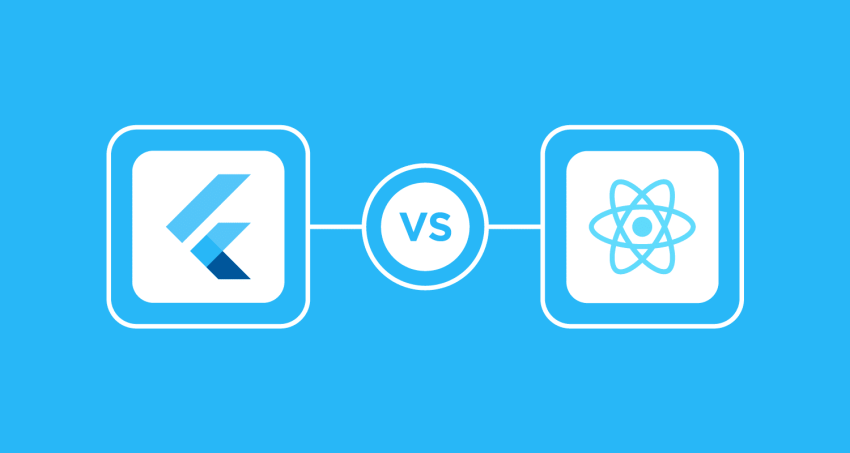Introduction:
Mobile app development has been booming for a while now, and two frameworks have emerged as the most popular choices for developers: Flutter and React Native. Both these frameworks offer cross-platform app development and are backed by some of the biggest names in tech. However, each framework has its own strengths and weaknesses. In this post, we will compare Flutter and React Native and help you decide which framework is best for your next mobile app development project.
Comparison of Flutter and React Native
Flutter and React Native are two popular frameworks for building mobile applications. In this section, we’ll compare the two frameworks based on several factors.
- Development Experience: Both Flutter and React Native offer a fast development experience, but Flutter has an edge when it comes to ease of setup and code organization. With Flutter, developers can use a single codebase to build apps for multiple platforms. Flutter’s hot reloading feature is also faster and more reliable than React Native’s.
- Programming Languages and Development Tools: React Native uses JavaScript and a set of platform-specific APIs, whereas Flutter uses Dart, a modern programming language created by Google. Flutter comes with a set of customizable and reusable widgets that make app development faster and easier. Flutter also has better documentation and tooling compared to React Native.
- Performance: Flutter is faster in rendering UI and has better performance than React Native. Flutter uses its own rendering engine and does not rely on the underlying platform’s native UI components, which makes it more efficient. React Native relies on the native UI components of the underlying platform, which can affect the performance.
- Compatibility with Platforms: Both frameworks support multiple platforms, but Flutter has better compatibility across platforms. With Flutter, developers can build apps for iOS, Android, web, desktop, and embedded devices, while React Native supports iOS and Android, and web with the help of third-party libraries.
Overall, Flutter is a better choice for mobile app development in terms of performance, ease of use, and compatibility with different platforms.
However, React Native has a larger community and more resources, making it easier to find solutions to problems and troubleshoot. Choosing between the two depends on the specific requirements of the project and the preferences of the developers.
In the next section, we’ll discuss the pros and cons of using Flutter and React Native.
Pros and Cons of Flutter:
Flutter is a relatively new mobile app development framework that has gained popularity among developers for its fast development cycle and hot reloading feature. However, there are also some disadvantages to consider before choosing to use Flutter. Here are the pros and cons of using Flutter for mobile app development:
Pros:
- Fast development cycle: Flutter offers a fast development cycle due to its hot reloading feature. This means that developers can make changes to the code and see the updates in real-time, without the need to restart the app or lose the app’s state.
- Single codebase for multiple platforms: Flutter enables developers to write a single codebase for both Android and iOS platforms, which reduces development time and costs.
- Customizable widgets: Flutter offers a rich set of customizable widgets that allow developers to create beautiful and responsive UIs.
- Performance: Flutter uses the Skia graphics library to render UI, which enables high performance and smooth animations.
Cons:
- Immaturity: Flutter is a relatively new framework compared to other mobile app development frameworks like React Native. Therefore, the community and resources available for developers are still growing, and the ecosystem is less mature.
- Limited third-party libraries: While Flutter offers a rich set of built-in widgets, third-party libraries are still limited compared to other frameworks like React Native.
- Learning curve: Flutter uses a unique programming language, Dart, which may require developers to learn a new syntax and concepts.
- Limited platform support: Flutter currently supports only iOS and Android platforms, and there is limited support for other platforms like web and desktop.
In conclusion, Flutter offers a fast development cycle, beautiful UIs, and high performance, but its immaturity and limited third-party libraries may make it challenging for some developers. Ultimately, the decision to use Flutter or any other mobile app development framework depends on the specific project requirements and the developer’s expertise.
Pros and Cons of React Native:
React Native has quickly become a popular choice for mobile app development. Here are some of its advantages and disadvantages:
Advantages:
- Large Community: React Native has a large and active community of developers, which means it has extensive documentation and a wide range of third-party libraries available. This makes it easier to find solutions to common problems and get help from other developers.
- Cross-platform compatibility: React Native allows for writing code that works across multiple platforms, including iOS and Android. This makes it an ideal choice for developing apps that need to be available on both platforms.
- Reusability of code: React Native allows for the reusability of code, which can save time and effort when developing apps for multiple platforms.
- Fast development cycle: With React Native, developers can make changes and see the results instantly, thanks to its hot reloading feature. This helps speed up the development process and allows developers to iterate quickly.
Disadvantages:
- Third-party libraries: While React Native has a wide range of third-party libraries available, it can be difficult to find ones that are reliable and maintained regularly.
- Slow performance: The performance of React Native can be slow, especially when compared to native apps. It can also be difficult to optimize performance, which can impact user experience.
- Limited access to native APIs: React Native can be limited in its access to native APIs, which can result in certain features not being available or requiring workarounds.
- Platform limitations: While React Native is cross-platform compatible, there can still be limitations in terms of platform-specific features and capabilities.
Overall, React Native is a good choice for mobile app development, especially for those looking to develop for both iOS and Android. Its large community and cross-platform compatibility make it a popular choice, but it may not be the best option for apps that require high performance or access to certain native APIs.
Choosing Between Flutter and React Native
When it comes to choosing between Flutter and React Native, developers need to take several factors into account. Here are some of the most important ones:
- Project Requirements: The specific requirements of the project will play a crucial role in determining which framework to use. For example, if the app requires high performance and fast rendering, then Flutter may be the better choice. On the other hand, if the app needs to be cross-platform and requires a large community for support, React Native may be the better option.
- Development Team Expertise: The expertise of the development team can also influence the decision. If the team has more experience with one framework over the other, then it may be more efficient to use that framework. For example, if the team is more experienced with JavaScript, React Native may be the better choice.
- Budget: The budget for the project can also be a factor. While both frameworks are free to use, the cost of hiring developers with expertise in a specific framework can vary. In general, hiring developers with expertise in Flutter may be more expensive due to the relatively small community.
Here are some examples of apps that may be best suited for each framework:
- Flutter: Apps that require high performance and fast rendering, such as gaming apps, real-time communication apps, and other apps that require heavy use of animations and graphics.
- React Native: Apps that need to be cross-platform and have a large community for support, such as e-commerce apps, social networking apps, and productivity apps.
Ultimately, the decision between Flutter and React Native will depend on the specific needs of the project, the expertise of the development team, and the budget for the project. Both frameworks have their pros and cons, and developers should carefully consider all factors before making a decision.
Conclusion
In conclusion, both Flutter and React Native are popular frameworks for mobile app development, each with its own advantages and disadvantages. Flutter is known for its fast development cycle and hot reloading, while React Native has a larger community and can reuse code across different platforms. When choosing between the two, it’s important to consider factors such as project requirements, development team expertise, and budget.
Ultimately, the choice between Flutter and React Native depends on the specific needs of each project. Regardless of which framework you choose, it’s important to have a talented development team in place to build the best possible app. If you’re looking to hire Flutter developers or React Native developers, there are many qualified professionals available to help you bring your app to life.
We hope this post has provided valuable insights into the differences between Flutter and React Native. If you’re interested in learning more about mobile app development with either framework, we recommend checking out the official documentation and community resources available online.

